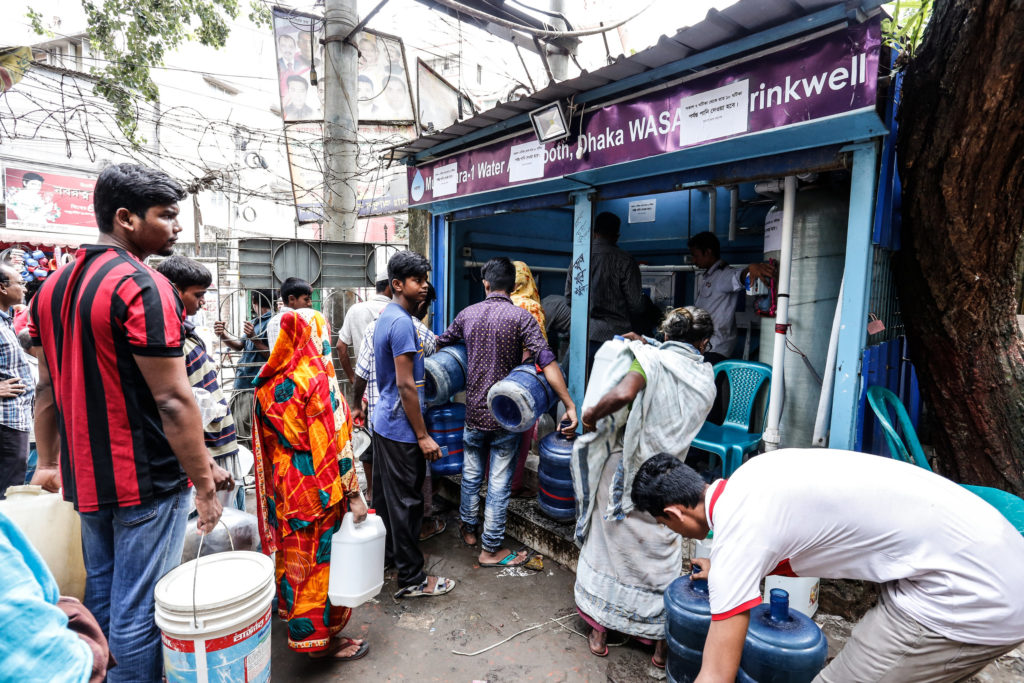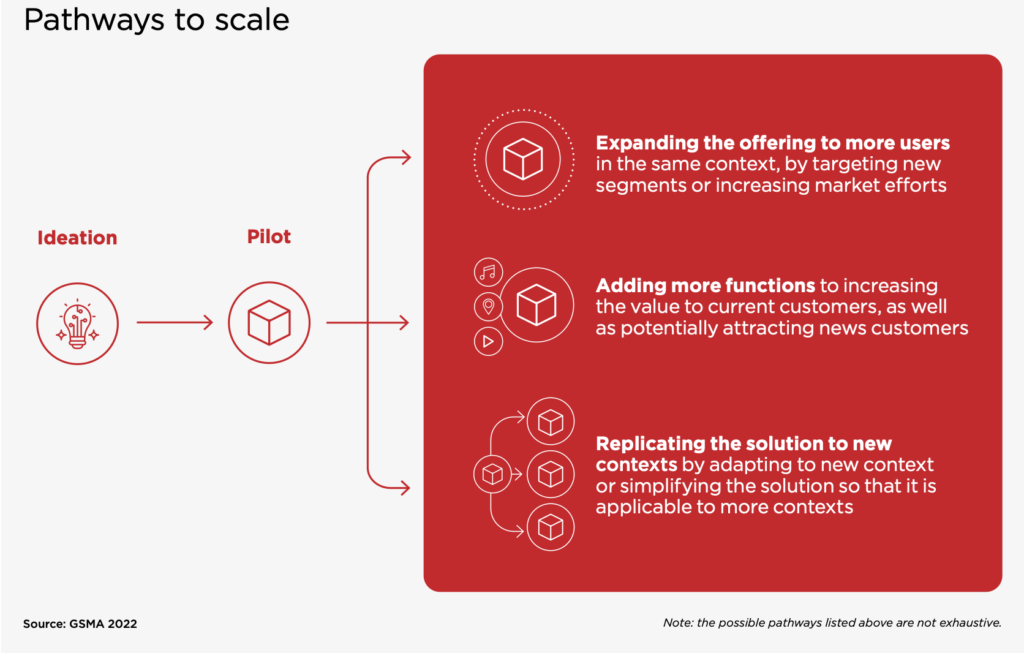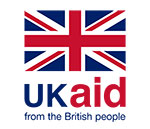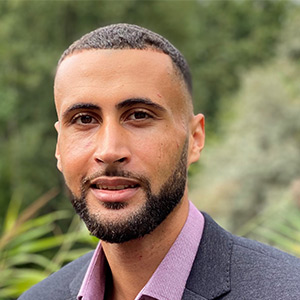This blog was co-written by Kelly Trott, Mayci Hicks, and Taylor Evans from Imagine H2O and Zach White and George Kibala Bauer from the GSMA.
Imagine H2O and the GSMA are two of the four of this year’s Work Water Week Key Collaborating Partners. We’ve welcomed the opportunity to contribute to the shape of this year’s programme and are excited for what the conference can produce. As a contribution to that discussion, this blog reflects on what it takes for innovations to emerge and scale.
Over the past 20 years of supporting innovation in the water sector, Imagine H2O and the GSMA Digital Utilities programme have witnessed common hurdles for both innovators seeking to develop and scale solutions, as well as the funders and investors who work with them. In this blog, we discuss three critical points in the life cycle of innovation. In most cases, these will naturally happen sequentially, but they are deeply intertwined. The three key hurdles are: i) Identifying suitable pilots and securing funding, ii) Gaining buy-in from stakeholders and forming effective partnerships, and iii) Driving widespread adoption and scale.
Hurdle 1: Identifying suitable ‘pilots’ and securing funding
Pilot programs are a vital strategy in navigating the uncharted waters of innovation. They are essential in creating a ‘space to fail’, experiment, learn and adjust. Despite this, the word ‘pilot’ will bring a shiver to many a spine and call to mind a string of wildly ambitious, though ultimately flawed, endeavours. A first and critical consideration is that not all pilots are made equal and teasing out the differences between them is important to having a better conversation.
There’s no one-size-fits-all solution to supporting innovation and targets, timescales, and ticket sizes should be tailored to the type of pilot. The types of pilots that start-ups could pursue can be broadly distinguished as:
- ‘First-of-its-kind’ pilots that support novel product development or solutions
- ‘Market validation pilots’ that test a minimum viable product (MVP) and provide the learning and evidence to provide the foundations for scale
- ‘Scaling and market expansion pilots’ that support the tailoring of solutions to new customer segments or markets
It’s important for philanthropic funders to be conscious of the wider funding context the organisations they support are working in. Grant or other non-dilutive funding can be distortionary if deployed without attention to how it works within an organisation’s commercial model, or how it can leverage access to sources of follow-on funding (debt, VC, or other equity investments). Within each pilot cohort, Imagine H2O nurtures a diverse array of projects. Each start-up receives bespoke support according to its pilot stage. The buttons below exemplify Imagine H2O’s commitment to aiding enterprises at various points along the piloting journey.
Picture a water treatment solution that doesn’t just process wastewater but eradicates contaminants with unmatched efficiency. Imagine H2O funded Aclarity to help turn this concept into a reality. Their methodology goes beyond conventional approaches, relying on cutting-edge electrochemical technology to tackle contaminants head-on. Funded by Imagine H2O, Aclarity successfully installed their solution in Detroit, Michigan, targeting the destruction of PFAS in leachate at two landfill sites. Their unique system treats the water draining from landfills, ensuring that harmful PFAS compounds are eliminated before they can enter the environment. The first-of-its-kind pilot operated continuously for weeks, proving that they destroy PFAS levels below 10 nanograms per litre while consuming minimal energy.
Epic Cleantec has developed an on-site decentralised solution that treats and reuses blackwater and greywater for non-potable uses like toilet flushing, irrigation, and laundry. In response to San Francisco’s 2021 regulations mandating wastewater treatment and reuse, Imagine H2O funded Epic Cleantec to deploy a pioneering commercial installation. The system recycles 7,500 gallons of water a day or 1.8 million gallons per year. Epic Cleantec leveraged Imagine H2O’s mentorship, marketing support and pilot funding to raise a Series A round, grow their team and secure major water reuse contracts across the United States.
SENTRY meticulously developed its wastewater treatment product over four years, with minimal marketing and industry outreach. In early 2020, SENTRY secured their first contract with Singapore PUB to leverage this project as a key reference for exploring other opportunities in the Asia-Pacific. Imagine H2O advised SENTRY on market entry, showcased the solution to its regional customer network and ultimately helped secure new pilots with partners in Malaysia, Vietnam and China. As they continued their global expansion, they needed additional help. SENTRY applied for pilot funding with Imagine H2O to jumpstart a deployment in South America in partnership with leading water consultants and the World Bank. With this project, their platform assessed the resilience of existing wastewater treatment facilities that service 21 million people. This milestone brings them one step closer to being recognised as the industry standard – and making sure that no wastewater goes untreated.
Innovators seeking funding can sharpen their pitches by considering where within this spectrum they fall and adapt accordingly. The GSMA generally receives 500 – 600 pitches per funding round. In two recent rounds focused on market validation and scaling the GSMA published analyses (here and here) of the pitches received and which organisations scored well. These provide a clue to the stages of development and levels of maturity organisations need to reach to be ready for such pilots. Generally, these organisations have a solid MVP, have been established 3-5 years, will have raised the initial capital to get off the ground and have a legal status, and may be pre- or post-revenue.
Hurdle 2: Gaining buy-in from stakeholders and forming effective partnerships
The challenges around piloting are not just financial or technical, they also include the complex task of rallying stakeholders and forging partnerships. Innovators in the water sector (and those supporting them) need to think and work politically from the very start. Deploying technologies is always a deeply ‘human’ process, and the water sector is such that few models can operate without having to engage with government, utility or regulatory structures. Turning visionary concepts into practical solutions requires more than just ingenuity and dollars, it demands collaboration, commitment, and the art of alignment.
Technology solutions need to be packaged in business models that respond to organisational constraints as well as address the technical challenges, and innovators should be very clear when articulating their value proposition to clients. Those wishing to break into the water sector face a set of entrenched challenges that need to be met:
- Information asymmetries between those selling tech solutions and those buying them mean that communicating value can be challenging
- Utilities’ commercial constraints means solutions often require a financing solution as part of the package
- Public procurement processes often require a track record and sound business fundamentals (that are not always easy to achieve or demonstrate for start-ups)
- Many utilities have ‘had their fingers burnt’ on tech solutions that have failed to deliver, and as such pitches must be rock solid on the evidence supporting claims
For many, this means developing adaptable solutions. Grantees of the GSMA Innovation Fund, Wonderkid and Diyalo, have both enterprise resource planning (ERP) for utilities and offer this through a modular SaaS solution. Similarly, CityTaps employ a revenue share model for delivering their smart-metering and software solution. The GSMA’s ‘Partnering With the Public Sector: A toolkit for start-ups in the utilities sectors’ provides practical tools for start-ups wanting to navigate partnerships. For others, the emphasis lies in assembling partners even before the pilot’s inception. This strategy has proved highly effective, as demonstrated in Imagine H2O’s collaboration with Sanivation. During the feasibility phase, Sanivation adeptly brought various partners to the table, securing contracts and driving positive change across an entire city.
In the coastal city of Malindi, Kenya, only 35% of the population has access to safely managed sanitation. Sanivation aims to provide city-wide inclusive services with their affordable, non-sewered sanitation technology. Imagine H2O worked with partners like WSUP and the World Bank to pilot Sanivation’s ‘waste-to-energy’ solution in Malindi and provide sanitation to the 300,000 residents. Over the course of the pilot, 1,088 tons of waste were diverted from the environment and treated, 1,541 tons of fuel made from treated waste that was sold to industries, and 3081 tons of CO2 were offset. With this project’s success Sanivation is now expanding across the region. This evolution is documented in a GSMA blog on how their partnership model has evolved around their technology.
Hurdle 3: Driving wide scale adoption
The third hurdle around driving wide scale adoption marks a transition from promising pilots to the ambitious goal of widespread integration. This is the true test of solutions across contexts and market segments. A first, and key, message is that it is most definitely possible! The GSMA have disbursed £23.5 million in innovation grants (across a range of sectors). Within two years of the grants the organisations supported have collectively raised ~£650 million in follow-on funding, and impacted over 47 million people. Over the past five years, Imagine H2O have disbursed $2 million in non-dilutive funding to 70 pilots in 20 countries. 47 start-ups received grants up to $100,000, subsequently collectively leveraging $14 million in follow-on funding.
Bangladesh has a population of 165 million people but 68 million lack access to reliable and safe drinking water. Drinkwell, at different stages, has received grants from both the GSMA and Imagine H2O. The GSMA funded Drinkwell in 2017 to test their Water ATM solution with Dhaka Water Supply & Sewerage Authority, and in 2018 Imagine H2O funded four demonstration systems of the company’s IOT-enabled, pay-as-you-go water ATMs in partnership with Chittagong WASA. These validations enabled them to commit to over 100 systems reaching more than 300,000 customers with support from the World Bank. In 2022, Imagine H2O led a workshop for 100 utility leaders in Bangladesh, in partnership with Dhaka WASA, and P4G around challenges and opportunities around the implementation of water ATMs in cities. This event led to a commitment from all leaders to empower 100 million people through decentralised water solutions. Notably, Chittagong WASA and Rajshahi City.

From a start-up lens, there are a range of scaling strategies that the GSMA’s former grantees employ, most commonly: Organic growth or ‘bootstrapping’, multi-stakeholder partnerships, licensing or white labelling products, and, of course, acquisition. These strategies interact with the various pathways to scale highlighted below (n.b. not exhaustive). The GSMA recently reviewed the scaling journeys of 21 start-ups in Africa and Asia working in agritech, aquaponics, energy, fintech, health, insurance, and water. That work identified five critical enablers across the sectors.
- Stay trim, the use of funds is just as important as raising funds: Raising funds is not a guarantee of success, as many start-ups still fail after raising funding. Evaluating how capital is deployed supports efficiency and further funding.
- Use relevant KPIs at the right stage: Tech start-ups are expected to grow rapidly, which means the metrics for measuring success will change as the start-up scales. Different KPIs are also required by different funders. Development actors and VCs will not always be concerned with the same metrics.
- Build in business model scalability: The pace and capacity for scale depends on a start-up’s business model and targeted user segments. Customer acquisition costs, lifetime value, and the revenue model will make or break.
- Remain conscious of the ecosystem enablers needed: The potential to scale depends on several enabling factors, including economic readiness, regulation, digital infrastructure, digital talent and available investment and support. These, rather than the solution itself determine the chances of replication across contexts.
- Apply a gender lens: Start-up funding is gendered. For funders, it is crucial to understand where and why gender financing gaps occur. It is equally important to invest in a diverse team and have strong female representation among leadership. It is also critical to pay attention to the unique needs and preferences of female customers and actively involve women in the product design processes. Beyond this, it is key to be aware, and work to address the gender disparities in workload and household burdens and other socio-economic gaps, discriminatory policies.

It is important to note that the water sector has some fundamentals that can place limits on the speed at which innovations can scale: Engaging utility clients can be time-consuming and costly, long payment cycles – and the risk of non-payment – pose real threats to viability, many innovations are Capex heavy which limits asset-light business models, and there can be a hesitance to adopt new tech. Despite this, the principles from across sectors have relevance to the water sector, and though it is a harder sector than many to work in, there remains a massive addressable market and a vibrant innovation ecosystem.
Join us at World Water Week
The water sector is one of the main vectors through which the human-centric impacts of climate change will be felt. Water crises are consistently ranked among the top five global risks by business leaders, and many cities are grappling with the very real threat of running out of water, as dramatically seen in Durban in 2018 and Chennai in 2019. Within this context the need for innovative solutions, and the finance to scale them, has never been more pressing, and we welcome this year’s World Water Week theme of ‘Seeds of Change: Innovative Solutions for a Water-Wise World’. For those not able to join in person, the conference is free to attend online, and you can register here. If you’d like to connect with us in-person at World Water Week, contact Zach White and Kelly Trott. You can also read more about the GSMA’s contribution the conference and key themes here.
The Digital Utilities programme is funded by the UK Foreign, Commonwealth & Development Office (FCDO), and supported by the GSMA and its members.




